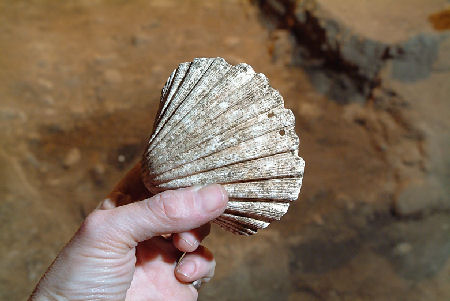St James one of Jesus’ twelve apostles died about AD 44, perhaps the first Christian martyr. Tradition says his remains were taken by boat and buried in northern Spain – in Santiago de Compestella. A Cathedral was built on the site which became a major destination for pilgrims – which it remains today. Scallop shells are commonly found on the seashore in the area. Because of some reputed miracles, they became a symbol of pilgrimage to St James’ remains. There were different routes for the pilgrimage, but the minimum walk was of 60 miles. People who completed it would acquire a scallop shell as a token. During the archaeological dig four scallop shells were found. The first one found was not with any particular burial – perhaps the actual burial had been disturbed during preparations for a later burial. The picture shows this scallop shell. The two holes drilled in the shell allowed it to be sewn onto a garment. These finds show that people from Aberdeen were making that pilgrimage to Santiago de Compestella more than 500 years ago. Quite an undertaking!
Scallop Shell Pilgrim Token
The photograph is copyright Aberdeen Art Gallery & Museums Collections and are used with permission.
